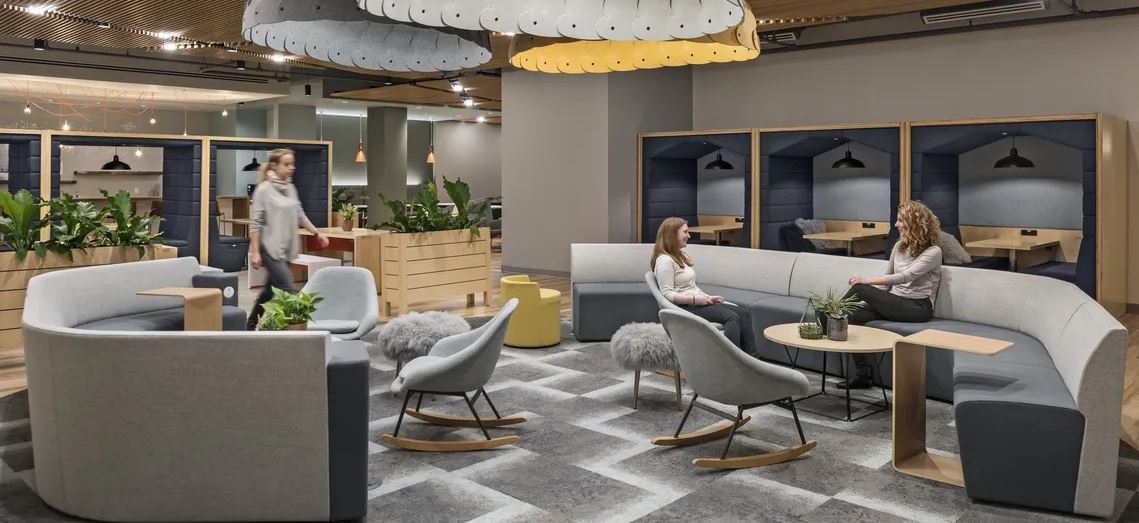
Hybrid Workplace: A Hybrid Approach to Work
As the pandemic continues to evolve, people’s feelings about the future of work is changing too. Hybrid working has been around for a while. However, it’s only since the seismic shift in how we work, brought about by the events over the last couple of years, that we’re hearing the term everywhere. History can show us many consequential changes made as a result of global crises - working from home is just one. In a recent Insights Live, we discussed the changing workplace in more detail.
In this article, we’ll dive into how employees feel about returning to the workplace, what the hybrid workplace is and how that term has evolved more recently, and we’ll take a look at how the demand for a hybrid work model has changed including some of the advantages and disadvantages.
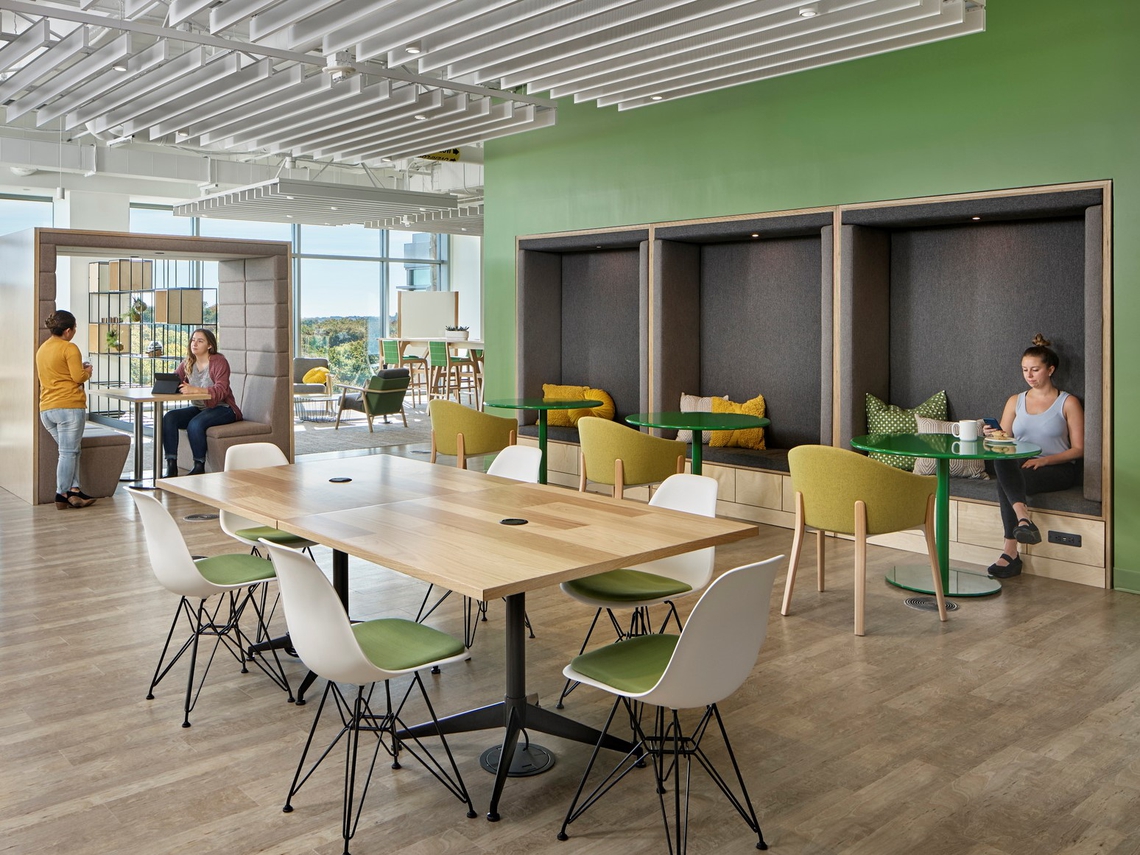
Back in 2020, employers found themselves at a crossroads, trying to ensure employees had all the resources they needed to maintain their productivity, while still hitting organizational goals. This paved the way for the hybrid workplace.
The hybrid workplace is usually used to describe a mix of different ways of working, usually, it is a business model combining remote work with working from an office. It looks different across many organizations, but it typically includes a flexible working pattern where meetings and collaborations are completed in the office, and work from home, or other locations, for the remaining time.
The hybrid workplace generally allows employees the opportunity to fit work around their lives, rather than structuring workaround fixed hours logged into an office. For many, there’s an optimal balance of productive work with reduced stress and less commuting. But the workplace needs to be equipped to deal with this, agile offices that offer flexible solutions to work for a number of different working styles are perfectly suited for this.
Hybrid is not just something you see with tech employees, most organisations around the world are now looking towards long-term hybrid work styles. A great example can be seen in these projects for a leading financial organisation that have looked to roll out a flexible working environment across their global sites at their hybrid office in Westlake Texas, and their flexible offices in Merrimack New Hampshire.
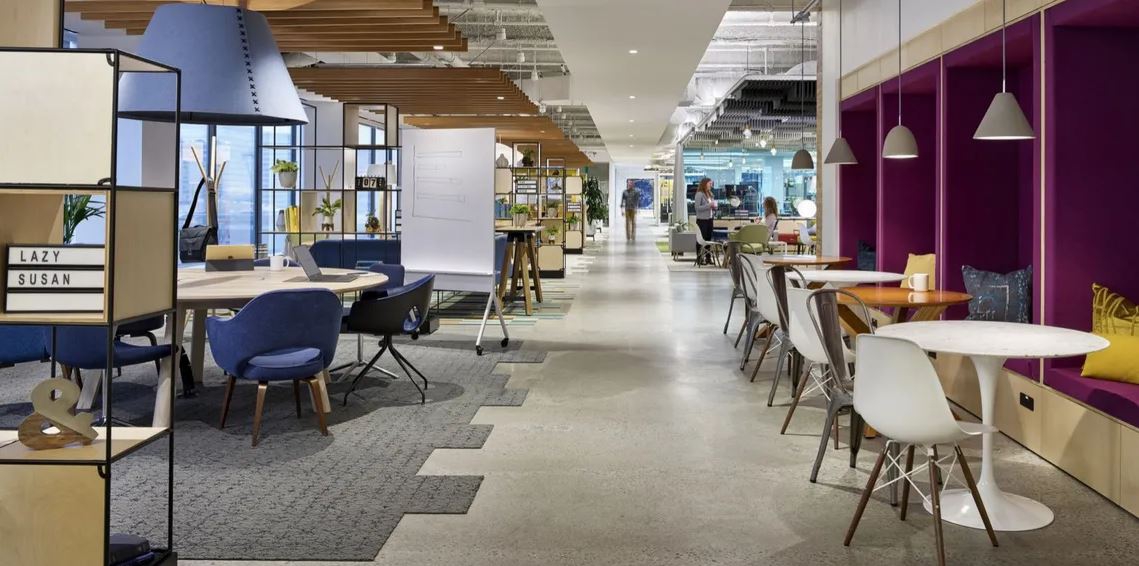
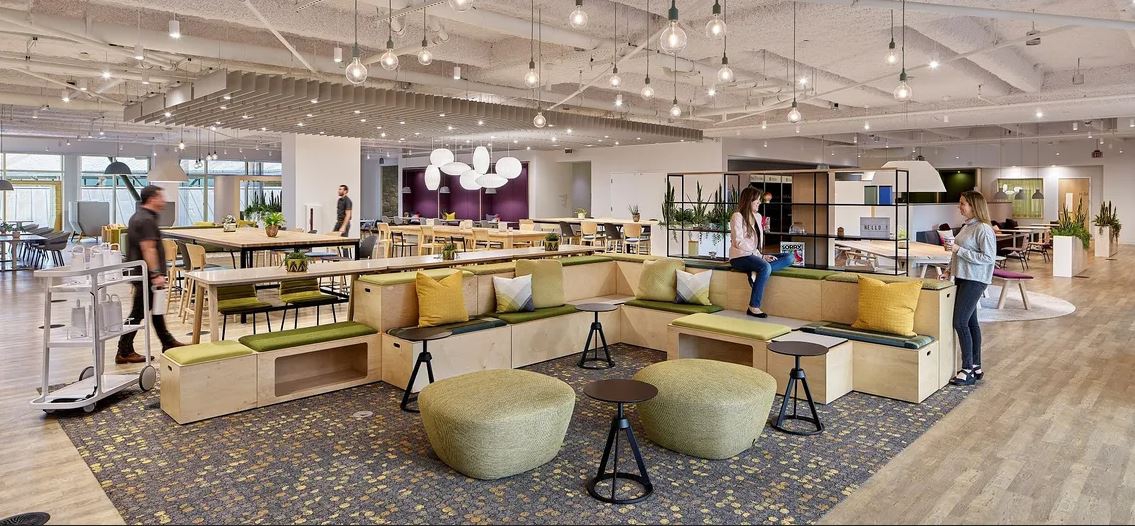
As the pandemic continues to evolve, so do people’s feelings about the future of work. Employees have gone from a feeling of uncertainty to how they can cope without the office, to fully embracing the flexible life without a commute when working remotely, to seeing more value in the workplace with collaboration, mentoring, networking and finding an easy split between work/life balance since they’ve been back.
Many employees have spent the past year or more working remotely and have settled into their own routines. Getting back into the swing of working on-site is a process. Once they get over the initial hurdle of having a new routine, many employees actually prefer to work mostly on-site. To encourage their employees to go in, workplace teams should focus on building a people-centric workplace experience.
Interestingly, according to some recent research undertaken, employees in industries outside of tech want hybrid work the most. About three-quarters of employees in the business services industry said they prefer a hybrid work model, with employees in construction, manufacturing, automotive, and utilities saying similar. Maybe tech employees may desire work setups that are more secure and sophisticated than what they have at home, or could it be they’re attracted to the perks of the workplace that are common at tech companies?
Another interesting trend we’ve seen in recent months is that there does seem to be a generational gap In preferences to work styles. With many generation Z or pandemials having never actually worked in an environment that was solely office-based, some having never even attended a large meeting that wasn’t over video conference! Many of this generation craves the collaboration to make the most of networking, mentoring and being able to learn from the more experienced workforce that can only come with being office-based. Whereas millennials and gen X seem much more embracing of the flexible arrangements, and baby-boomers prefer to have a focussed space providing a clear divide between work and life, and therefore use the office and private spaces more. But what this does show us, is that there is a mix of working styles across the workforce and workplaces today need to be able to cater for all types.

There are some clear advantages of hybrid working. In addition to the points already discussed, we’ve listed a few more trends that we’ve seen through working with our clients all over the globe:
- Separating work life with home life through going to the office has its benefits vs. only remote working.
- Worries over workplace safety; most employers believe they have done enough to keep their workers safe, but empathic and considerate strategies may mean that employers have to go beyond what they feel is appropriate. This was actually the topic of debate in one of our recent Insight Live episodes, Considerate Over Corporate which you can re-watch.
- Employees have missed being on-site, but want to keep the added flexibility that has come with working remotely. In the younger generations that have only known work through ‘pandemic life’ and they may be feeling like they are missing opportunities.
- Working from home set-ups aren’t always optimized for great ergonomics, particularly in the younger workforce who are unlikely to have a study or home office, so end up leant over the coffee table to perform tasks. Having that balance of going to the office when focussed work is required is a great advantage for them.
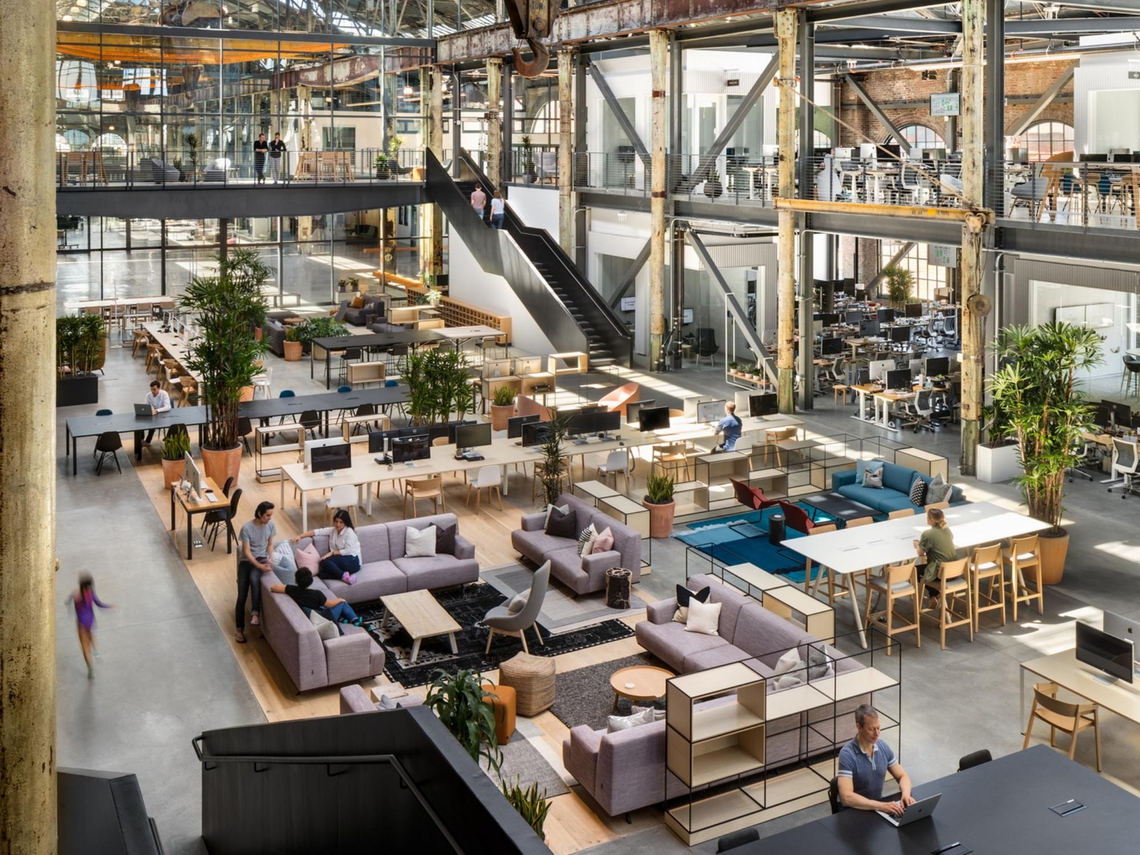
There are a number of ways to implement a hybrid work strategy, in this last section, we have summarised some quick and easy tips, taken from our experiences and conversations with thought leaders in the industry:
1. Include your employees in the process
There is a greater chance your hybrid workplace initiative will be successful if employees feel included in the journey and related discussions. This could be accomplished through employee surveys and polls, where employees are asked for input on how they feel about returning to the workplace.
2. Leverage your intranet
The hybrid work environment may be new, but the challenges associated with connecting and communicating with employees aren’t. The good news is that these problems were solved a long time ago with intranet software. Having a central location for your people to pick up on messages and changes is a great way of keeping them involved in the company culture when they are not in the office.
3. Health and safety continues to be top of mind for employees
A large number of employees tell us they are worried about staying safe while in the workplace, even with the vaccine rollouts we have seen around the world. This could signal a new normal—one that requires employers to recognize health and safety as part of the workplace experience. Being more Universally accepting to different points of view, and facilitating the ability to split work in different locations can go a long way in helping people feel safer.
4. Facilitating different working styles with different working zones
Offering different types of environments through zoning and dividing the workplace can help the workforce find their ideal setting for tasks. This ‘Activity Based Working Spaces’ allows employees to choose from a variety of settings according to the nature of what they are doing, combined with a workplace experience that empowers them to use those spaces throughout the day.




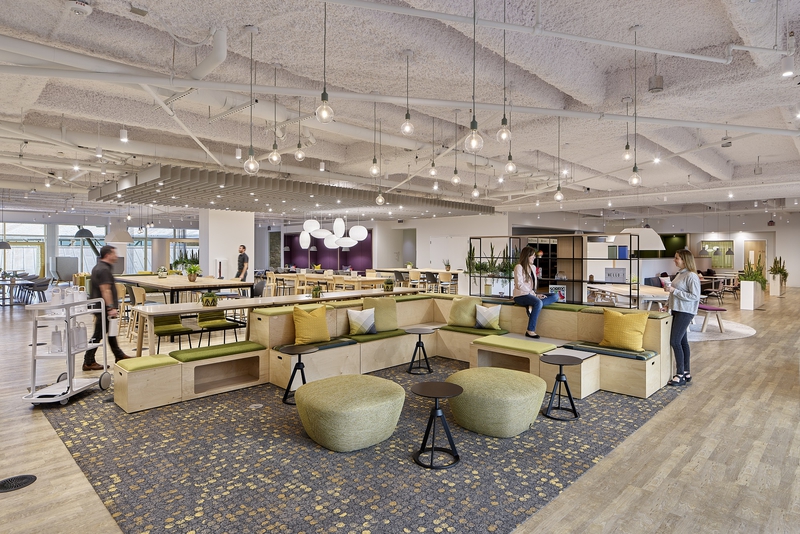
Leading design firm Jacobs have recently completed another location for one of their long-time clients in the financial…
FINANCIAL SERVICES
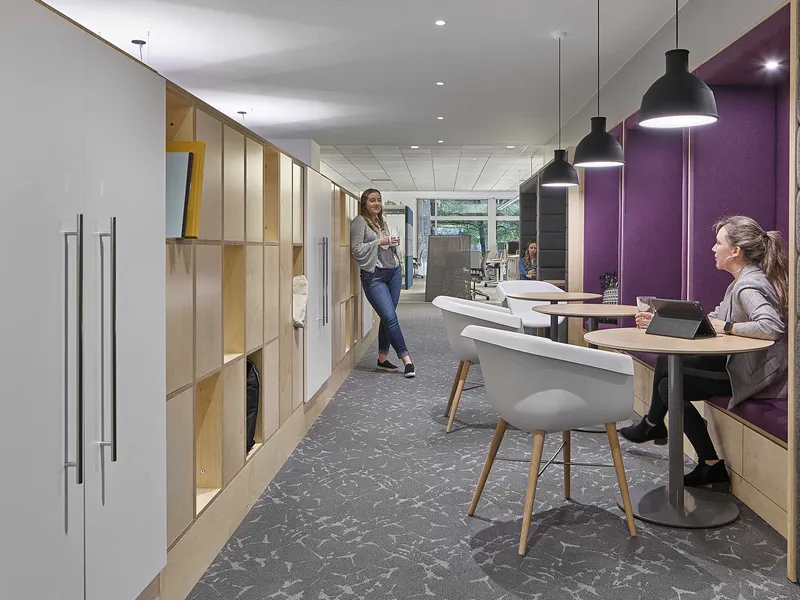
Jacobs have recently collaborated with a leading financial services client to design their new workspace in Texas. A st…
FINANCIAL SERVICES
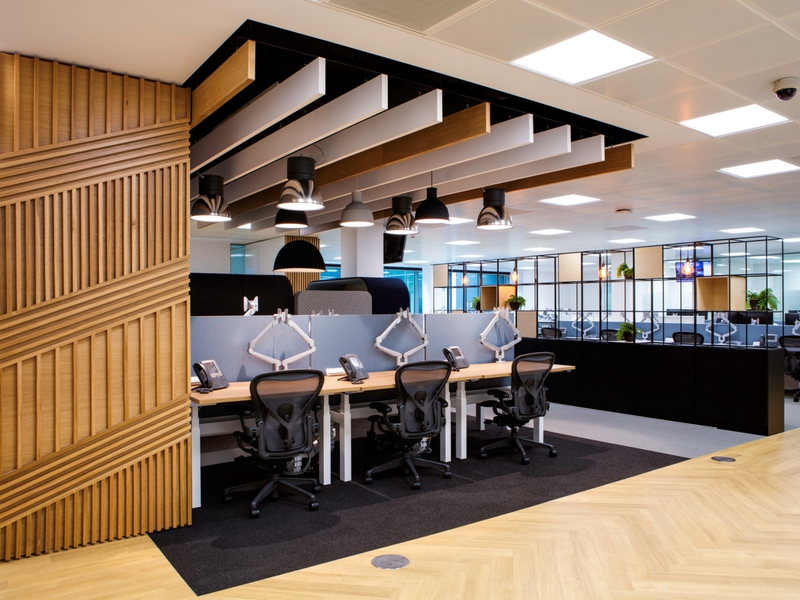
A leading financial company has recently moved into its new headquarters in Dublin, working with Walls to Workstations …
FINANCIAL SERVICES